Why you can trust Tom's Hardware
Our HDR benchmarking uses Portrait Displays’ Calman software. To learn about our HDR testing, see our breakdown of how we test PC monitors.
The GFI27DBXA doesn’t provide HDR conveniently but does provide it competently. For best results, you should turn it on manually, then max the brightness and engage DCR dynamic contrast.
HDR Brightness and Contrast
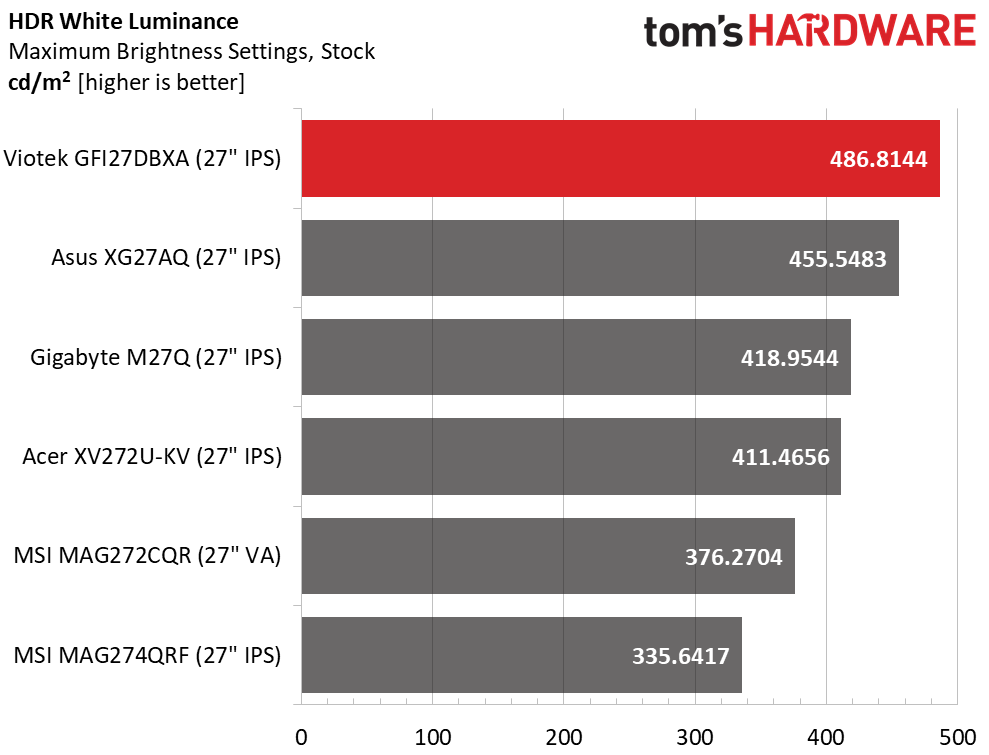
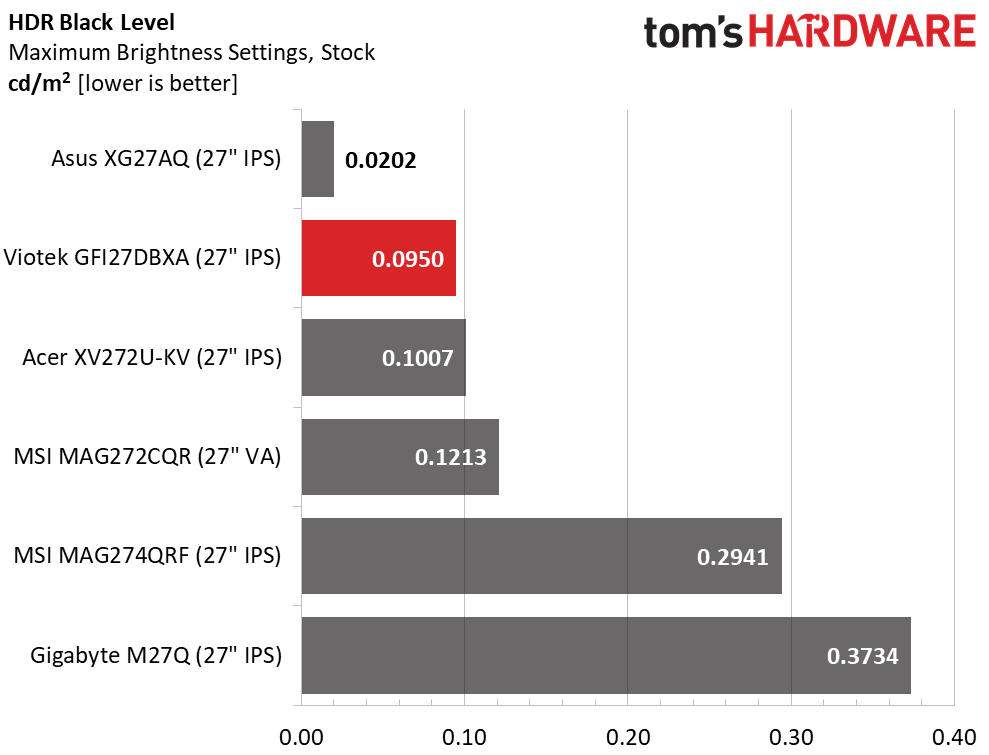
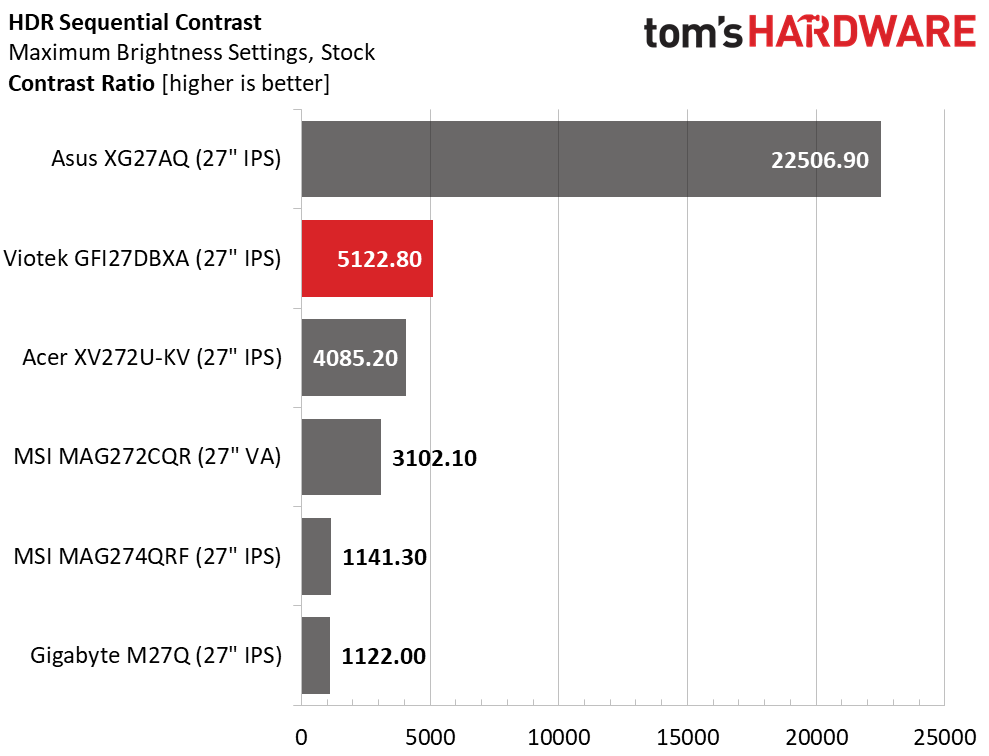
Viotek claims “HDR 600” in its marketing, which is not an official certification, by the way. However, the GFI27DBXA couldn’t hit 600 nits with HDR in our tests, whether measured field patterns and windows. The latter was less bright, thanks to the dynamic contrast option. However, the GFI27DBXA is still the brightest monitor in our sample group. 486 nits is perfectly respectable, especially for $320. DCR delivers an excellent HDR black level that ups the contrast ratio to an impressive 5,122.8:1. That’s about as good as it gets at this price point.
Grayscale, EOTF and Color
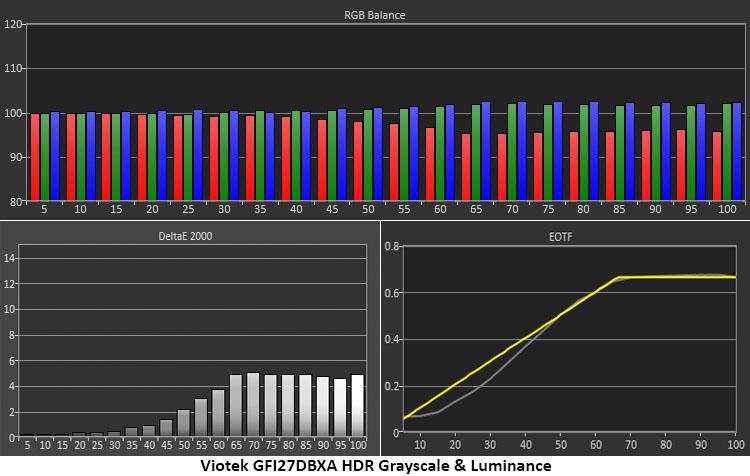
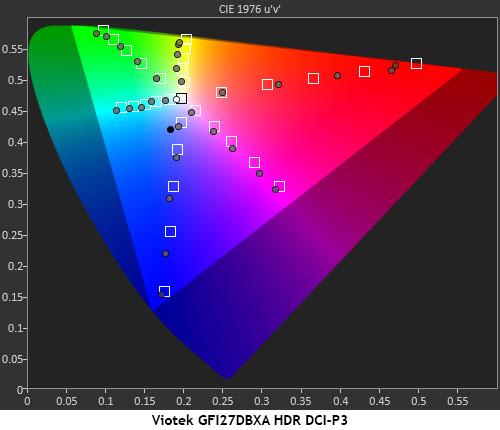
With DCR on, the GFI27DBXA rises slightly too slowly from black in the HDR luminance test. Some shadow detail was hard to see, though not completely obscured, during gaming. Values are right on spec from the 45% brightness mark and up, with a tone map transition at 65% brightness.
Grayscale errors are minor with a slight coolness that creeps in at 60% brightness. There are no calibration options in HDR mode, but we were satisfied with the image.
Color tracking is a little better in HDR mode than SDR. Green hues are right where they should be, and the slight oversaturation seen throughout the gamut makes the image pop. There are a lot of monitors that support HDR, but the GFI27DBXA is one of the few that do it well. Performing at this level for its price is a nice bonus.
Get Tom's Hardware's best news and in-depth reviews, straight to your inbox.
Current page: HDR Performance
Prev Page Grayscale, Gamma and Color Next Page Viewing Angles, Uniformity, Response and Lag
Christian Eberle is a Contributing Editor for Tom's Hardware US. He's a veteran reviewer of A/V equipment, specializing in monitors. Christian began his obsession with tech when he built his first PC in 1991, a 286 running DOS 3.0 at a blazing 12MHz. In 2006, he undertook training from the Imaging Science Foundation in video calibration and testing and thus started a passion for precise imaging that persists to this day. He is also a professional musician with a degree from the New England Conservatory as a classical bassoonist which he used to good effect as a performer with the West Point Army Band from 1987 to 2013. He enjoys watching movies and listening to high-end audio in his custom-built home theater and can be seen riding trails near his home on a race-ready ICE VTX recumbent trike. Christian enjoys the endless summer in Florida where he lives with his wife and Chihuahua and plays with orchestras around the state.
-
waltc3 400 nits is actually very poor for HDR. It's at the very bottom of the HDR scale, actually. My current monitor is 1015 nits, DisplayHDR 1000 certified--and just off my previous 360 nits "HDR" monitor--I can tell you the comparison is night and day. If you want HDR support, look elsewhere, imo. Just thought I'd mention this as Windows HDR support is now actually pretty darn good these days (latest Win10 builds/Win11 betas). Game developers are at last getting the hang of it!Reply -
Jackson1078 So your monitor is brighter? Big deal. That still doesn’t change the fact that this monitor’s HDR implementation is a lot better then most in its price range and a good number above it. It will still deliver a solid result.Reply